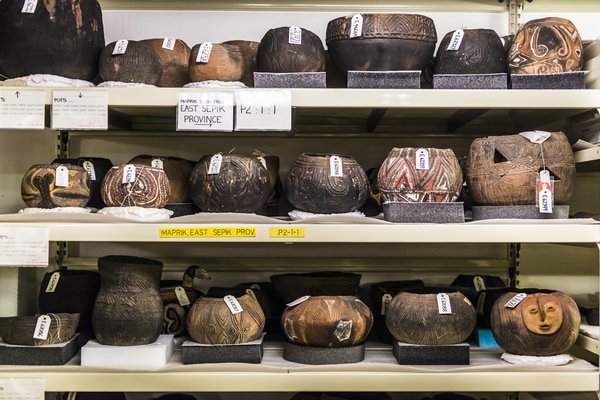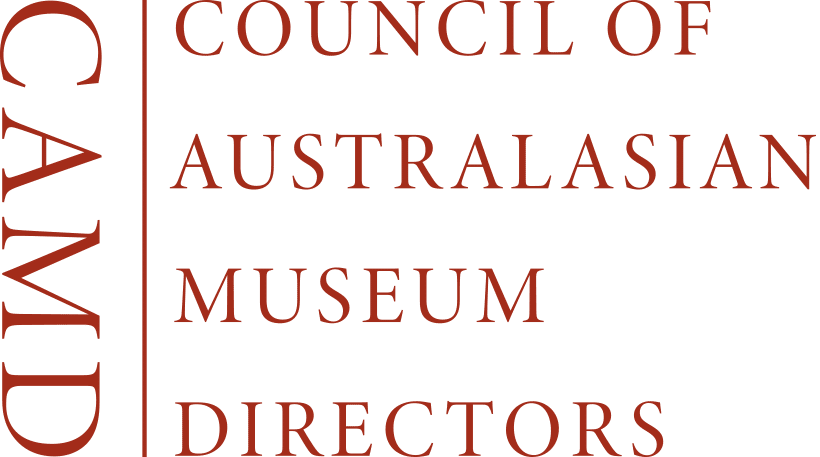Andrew Mathieson, Australian Museum, US Embassy and Pasifika partners work to save cultural relics and artefacts, National Indigenous Times, 13 January 2025

Thousands of significant cultural relics across the Pacific are at risk from climate change and current protections are hindered by staffing and funding shortfalls.
An Australia Museum program aims to aid a number of cultural institutions, with the aim of expanding the museum-to-museum initiative – the Pasifika Tauhi Project, after outgoing US ambassador to Australia, Caroline Kennedy, asked for an investment from US president Joe Biden.
The “clock is ticking” on a unspecified number of Melanesian and Polynesian collections, the program discovered in the months after its launch last October, Australia Museum chief executive and director, Kim McKay, has warned.
Recent issues affecting collections have been the National Museum and Art Gallery, of Papua New Guinea, forced to temporarily close after its air-conditioning has struggled with extreme levels of humidity, while the roof of the Tuku’aho Memorial Museum in Tonga collapsed under the weight of unprecedented rains, putting the survival of the artefacts in doubt.
The Pasifika Tauhi Project is still under a trial run is partnering with cultural institutions and communities in Tonga, PNG, Vanuatu and Solomon Islands.
The project’s name, tauhi, is a Tongan word meaning to ‘look after, tend to, or to take care of’, which articulates the objective of the Australia Museum’s partnership that could expand beyond April and to more nations.
The trial project aims to “build capacity” for cultural revitalisation, preservation and to assist in safeguarding Pasifika knowledge and practices, specifically from the impacts of a changing climate that is expressly felt among the islands.
The Pasifika Tauhi Project has been establishing multilateral connections across the Pacific communities, connecting practitioners to key experts in conservation, research and science at the Sydney-based museum, and provide insights for further collaboration in the region.
There has been a focus to preserve and maintain cultural knowledge too, as much as cultural relics, Ms McKay adding the importance of protecting a rich and diverse heritage is a “global responsibility”, but also an important step forward to help mitigate the impacts of climate change on cultural heritage.
“Museums across the Pacific region are at the forefront of the efforts to preserve and protect cultural knowledge and identity,” she said.
“There is a well-recognised imbalance between Pacific Island nations’ minimal contributions to global warming and the severe consequences these nations face from the dramatically changing climate, which is already impacting ancestral homelands and the important cultural traditions.
“If this trial is successful, we hope to expand this project to other communities that also involves other large museums across Australia, New Zealand and the USA.”
Ms Kennedy’s interest in the project is quite personal.
She convinced the current administration of the US government ahead of elected president, Donald Trump, returning to power to back the Australian Museum’s project to fund efforts to catalogue, digitise and help physical objects that are important to the South Pacific’s cultural heritage that would benefit the US too.
The daughter of late US president John F Kennedy retains a strong and personal connection to one of the four existing beneficiaries – the Solomon Islands – where her father, a war hero, was once not only stationed in the early 1940s, but stranded during the latter stages of World War II off the Melanesian archipelago.
First Nations director at the Australian Museum, Laura McBride, said work with counterparts of cultural knowledge in the region furthers the engagement and repatriation work that has been undertaken.
“Through Pasifika Tauhi, we will work with museums and communities to identify the small-to-medium projects that would benefit from the Australian Museum’s support in terms of revitalisation and conservation efforts, ensuring any project is self-determining and also community-led,” Ms McBride, a Wailwan woman, said.
“As we establish reciprocal relationships in the Pacific region, we aim to strengthen networks of cultural workers to enhance the sector and the impact we can have in our First Nations’ and Pasifika communities.”
Melissa Malu, the Head of Pasifika Collections at the Australian Museum, can imagine many positive outcomes from creating grassroots, cross-regional connections in the Pacific.
“Through grassroots connections and conversation, the Australian Museum seeks to better understand the challenges to cultural heritage across the Pacific, so we can now effectively extend conservation support,” she said.
The aim of her work with museums is to assist the preservation and revitalisation of cultural heritage, including that of the Tuku’aho Memorial Museum
“As we were discussing the aims of the project, the principal then shared with me that the roof of their gallery has been severely damaged due to extreme weather events that have increased on the island, placing their collections at risk,” Ms Malu said.
Malu, who visited Tonga this month, also found display cases severely contaminated from ash in a 2022 underwater volcano eruption in the island.
Staff under senior archaeologist and acting director, Alois Kuaso, in Port Moresby’s museum and art gallery recently told the ABC they are so stressed since the air conditioning broke down in storerooms and it is still yet to be fixed for the past six months.
“The national collection is under our custody, and we are responsible, under mandate by law to look after these things, and if we don’t, we will be failing the country and the people of Papua New Guinea,” Mr Kuaso said.
“That’s a worrying part of it.”
The PNG museum collected most of the priceless artefacts during its colonial period under Australian, German and British rule, but Mr Kuaso cannot access the funds in an already tight budget to ensure their longevity.
Wooden objects like shields are warping, meaning they are bending, while PNG health officials found out workers were showing signs of heat exhaustion, fatigue, dizziness and were at risk of exposure to mould and chemicals in an area with no windows.
“Since we don’t have the capacity, we have to bring in someone from outside, probably from Australia, or someone else who is willing to help one of those museums,” Mr Kuaso said.

